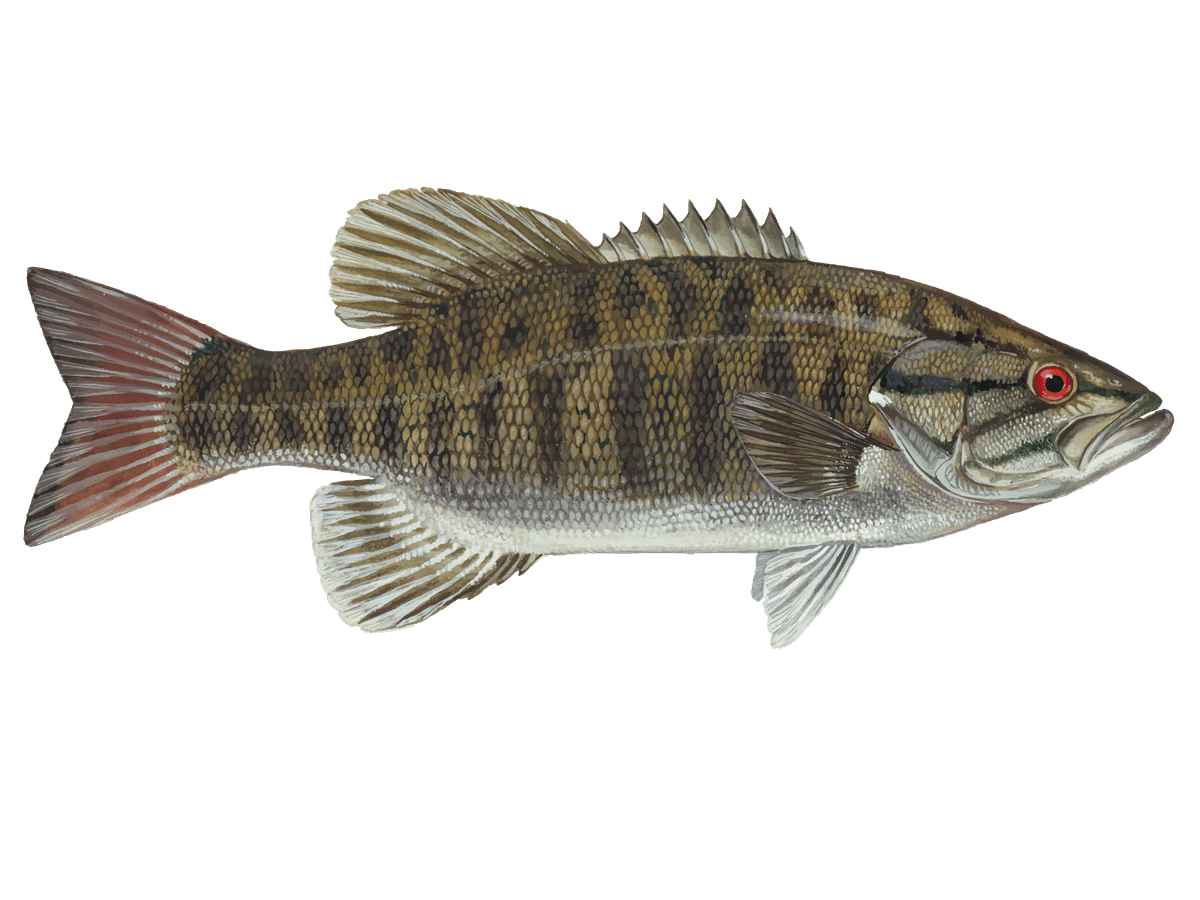Pro-Level Lake Texoma Bass & Catfish Trip
- Published Date: August 31, 2025
- Fishing
- Lake Texoma
- $450 price range
Summary
%2F%2Fusers%2F38e22c63-9055-448f-971c-98b29de0944b%2Fratecard%2F491997520_122148733514460513_8075733368045312859_n.jpg&w=1200&q=75)
Big Catches on Texoma


Pro-Level Catfish & Bass Fishing on Lake Texoma
Ready to step up your fishing game on one of Texas' premier lakes? This half-day trip with Captain Graysen Freeman is tailor-made for serious anglers looking to land some monster catfish and bass on Lake Texoma. You'll be cruising in style on a 30-foot center console boat, hitting all the hotspots where the big ones lurk. Whether you're after blue cats that'll make your arms ache or smallmouth bass that'll test your finesse, this trip delivers the goods. It's four hours of non-stop action, strategy, and the thrill of the catch.
What to Expect on the Water
From the moment you step aboard Captain Graysen's custom rig, you'll know you're in for a top-notch fishing experience. This isn't your average "cast and hope" outing – it's a masterclass in advanced angling techniques. You'll cover serious water thanks to that 300HP Suzuki engine, giving you access to Lake Texoma's most productive fishing grounds. Graysen's got the lake dialed in, knowing exactly where the fish are holding based on the season, water conditions, and time of day. He'll share pro-level tips on everything from bait selection to reading your fish finder like a pro. With a max of three guests, you'll get plenty of one-on-one coaching to refine your skills.
Techniques That Land Lunkers
This trip is all about using cutting-edge tactics to put you on big fish. For catfish, you might be drifting with precision-controlled trolling motors, using advanced sonar to pinpoint schools of bait fish that the cats are feeding on. When it comes to bass, get ready to work deep structure with finesse techniques like drop-shotting or throwing big swimbaits for those trophy smallmouth. Captain Graysen's always experimenting with the latest gear and methods, so you might find yourself using tools like live-scanning sonar or even underwater drones to get an edge. It's not just about catching fish – it's about leveling up your entire approach to the sport.
Species You'll Want to Hook
Lake Texoma is famous for its diverse fishery, but on this trip, we're laser-focused on two main targets: blue catfish and smallmouth bass. The blue cats in Texoma are the stuff of legend – we're talking about fish that can easily top 50 pounds, with the lake record standing at a whopping 121 pounds. These whiskered giants are most active in the cooler months, from fall through spring. They love to hang around underwater channels and dropoffs, often suspending in the water column to ambush schools of shad. When you hook into one of these bruisers, be ready for a battle royale that'll test every ounce of your strength and skill.
As for the smallmouth bass, Texoma's bronzebacks are some of the best in the country. These fish thrive in the lake's rocky structure and clear waters, often pushing weights of 4 to 6 pounds. Spring and fall are prime times for smallies, but with the right approach, you can catch them year-round. They're known for their acrobatic fights, often leaping clear out of the water when hooked. Targeting these fish requires finesse and patience, but when you dial in the bite, the action can be non-stop. There's nothing quite like feeling that telltale 'thump' of a big smallmouth inhaling your lure.
Why Anglers Keep Coming Back
What sets this trip apart is the combination of top-tier fishing action and professional-grade instruction. You're not just paying for a guided trip; you're investing in an experience that'll make you a better angler. Captain Graysen's approach is all about empowering you with knowledge – from understanding seasonal patterns to mastering new techniques. Many guests find themselves booking return trips, eager to build on what they've learned and tackle new challenges. Whether you're looking to land that personal best or just want to soak up some serious fishing know-how, this half-day adventure delivers in spades.
Time to Book Your Spot
If you're an experienced angler looking to take your game to the next level, this Lake Texoma trip is calling your name. Four hours might not seem like a long time, but when you're out there with Captain Graysen, every minute is packed with potential for big catches and bigger learning opportunities. You'll come away with new skills, insider knowledge on Lake Texoma's best spots, and hopefully, some epic fish stories to tell. Spots on this premium trip fill up fast, especially during peak seasons, so don't wait to lock in your date. Grab your fishing buddies (remember, it's a max of three guests) and get ready for a morning of world-class fishing on one of Texas' most renowned lakes. Book now, and let's get after those Lake Texoma giants!
Learn more about the species
Blue Catfish
Blue Catfish (Ictalurus Furcatus) Fish Description
Blue Catfish are known for their slate-blue bodies. However, they are often mistaken for the Channel Catfish because of their appearance. To identify them, people usually count the rays on their fins. Blue Catfish only have 30-36 rays on their fins. Another is to look closely at the anal fin. Blue Catfish’s anal fin has a squared-off edge whereas Channel Catfish have a rounded anal fin. They also have a dorsal hump which the Channel Catfishes don’t really have.
Known also as Blue Cat, Blue Catfish have similar traits to that of their catfish cousins. They have a deeply forked tail which is where they got their scientific name. Blue Catfish also have a bit of an underbite, which makes them more prone to surface feeding. Blue Catfish, like all other catfish, have whisker-looking barbels that place them in the Catfish group.
Blue Catfish Diet and Size
Blue Catfish are terrifying hunters and are often described as opportunistic. Like their other catfish cousins, they eat virtually anything. Though, they have a preference for crawfish, some freshwater mussels, frogs, and other aquatic substances that are readily available. Larger Blue Catfish are also known to become predators of the Asian Carp.
Anglers usually notice the Blue Catfish feasting on some baitfish under a school of feeding Striped Bass. In a way, Blue Catfish act like scavengers when it comes to hunting for food.
Blue Catfishes are the largest among all the North American catfish species. Blue Catfish range between 25-46 inches and weigh at an average of 81.5 lbs.
Interesting Facts about the Blue Catfish
- Blue Catfish are considered pests in some states like Virginia.
- When anglers catch Blue Catfish, they’re usually told to kill them to cull their numbers.
- Blue Catfish love feeding on Blue Crabs which is detrimental to Virginia’s fisheries.
- Blue Catfish are so sturdy for their ability to handle brackish water.
- It has a low mortality rate due to its intimidating size and its success rate as a hunter.
- Because the population of Blue Catfish exploded, some people have even resorted to electrofishing.
- Electrofishing is a technique that scientists often use to stun or impair the fish.
- Doing this allows them to research more into the fish.
- However, some states have opted to use Electrofishing as a means of culling Blue Catfish. Some have caught around 700 Blue Catfish per hour!
- Electrofishing is a technique that scientists often use to stun or impair the fish.
Blue Catfish – Fishing Techniques: How to Fish for a Blue Catfish
Like any catfish, they prefer freshly-cut up bait. Having cut fresh bait has the blood of the bait drip into the water which will seduce the catfish via its taste receptors on its body. Once the Blue Catfish detects it, they’ll start heading to your bait. Some people have noted that herring, sardine, and even chicken liver will be a good bait for catching a Blue Catfish.
As for leaving your bait, let it sink all the way to the ground. Blue Catfish are opportunistic so they’re not going to attack a bait that’s constantly moving. Let it fall to the ground until you feel a nibble. Wait for a good 1-2 nibbles (though it depends on how much bait you put) before reeling it in.
Others use Electrofishing which uses a cathode and anode to attract them to you. Once they come to you, they’ll suffer a slight “stun” or shock but that doesn’t affect their meat quality. It will make it easier for you to catch though and you just might find yourself hauling out a lot.
Make sure you also bring leather gloves or gloves that have a lot of friction. They’re slimy and they will put up a fight so you’ll need gloves to have a good grip on these slippery creatures.

Blue Catfish Habitat and Distribution
The best place to start fishing for Blue Catfish is a place where they are considered pests. So, Virginia might be a good place to start.
Once there, start looking in lakes and rivers. Blue Catfish stay in those kinds of places but they do have a specific requirement: it has to be near some sort of tidal creek. Since Blue Catfishes follow the tides, they usually end up the creek and stay there especially if they found a channel or hole to their liking. The holes need to deep and have to be muddy at the bottom. Once, there you can give it a shot.

Smallmouth Bass
Smallmouth Bass (Micropterus Dolomieu) Description
Smallmouth Bass belongs to the Sunfish family (Centrarchidae) and is a popular freshwater fish among anglers. Smallmouth Bass has a dark green or black color body, with vertical dark brown stripes that usually fade with age, and the color contrast may vary depending on the fish’s habitat. Their eyes are red or brown. They have two dorsal fins; the front one has 10 fin spines while the other has 10 to 15 soft rays.

Female Smallmouth bass are usually larger in size than males. The average size of smallmouth bass can be 18–20 inches. On average, they usually live only 5 to 6 years but can survive up to 15 years. Smallmouth bass found in lakes are larger than those found in streams and ponds. Females usually weigh from three to six pounds, while the males are around 2 pounds.
Smallmouth Bass Habitat

This bass species can be found in clear waters, such as ponds, lakes, and rivers. They prefer rubble and rocky bottoms. Smallmouth bass also prefer moderate temperatures, and they will swim deeper in the cooler water during summer.
Spawning
Smallmouth Bass spawn March-May when water temperatures reach between 59 and 64 degrees. The males build nests in the shallow waters of lakes and rivers. The nest is built building within 150 yards of where the male built his nest the previous year.
Diet
The Smallmouth Bass eats small fish, crayfish, and insects. They hide behind a fallen tree or a rock and attack when the prey is near.
Fishing Techniques - How to Catch Smallmouth Bass
A light breeze and calm waters are best suited to catch Smallmouth Bass. In spring and fall, they like to swim in open waters during bright days and warm temperatures. In summer, they swim deep under cooler water and are harder to find. It is best to fish for Smallmouth early morning or late evening.
Smallmouth bass are fighters. A spinning rod of light to medium action with a 6 to 10 pounds test line is recommended.
There are plenty of baits and lures that work successfully to catch these fish; insects, jigs, minnows, plugs, plastic worms, spoons and night crawlers. A favorite of anglers is to use spinning baits that when rigged weightless, can hang on top of the water. When the fish are in deeper water during the summer, use a rig with a weighted vertical drop hook.
Fly-fishing Smallmouth Bass is popular due to their abundance and strength. When you want to cast into deeper water, use a 6, 7 or 8 weight rod. This will be suitable for strong winds, landing larger fish, and a long cast. A longer rod, 81/2- to 9-foot, is good when you need accuracy for casting near shoreline structures or long-distance casting.
Is Smallmouth Bass Good to Eat
Smallmouth bass have a firm filet with a mild, yet distinct flavor that pairs perfectly with a variety of seasonings and cooking methods. So whether you prefer grilling, frying, or baking your catch, smallmouth bass is a tasty and versatile option that you won't want to miss out on. What's more, smallmouth bass are a healthy food option, as they are excellent sources of protein and Omega-3 fatty acids.
With any freshwater fish, you need to be mindful of the water you are fishing. Make sure if you are eating your catch, the water is clean and be aware that freshwater fish should always be cooked.

About the Premier Guide Service

Vehicle Guest Capacity: 10
Manufacturer Name: Suzuki
Maximum Cruising Speed: 20
Number of Engines: 1
Horsepower per Engine: 300
%2Ffit-in%2F250x250%2Fguide_websites%2F29704%2Fimages%2F1744165844639lake-texoma-fishing-logo.jpg&w=1200&q=100)
%2Fusers%2F38e22c63-9055-448f-971c-98b29de0944b%2Fimages%2Ffishing-with-friends-in-ok-2836.jpg&w=768&q=75)
%2Fusers%2F38e22c63-9055-448f-971c-98b29de0944b%2Fimages%2Ffishing-fun-in-ok-2702.jpg&w=768&q=75)
%2Fusers%2F38e22c63-9055-448f-971c-98b29de0944b%2Fimages%2Fanglers-fishing-kingston-2711.jpg&w=768&q=75)
%2Fusers%2F38e22c63-9055-448f-971c-98b29de0944b%2Fimages%2Fsuccessful-fishing-trip-kingston-2669.jpg&w=768&q=75)
%2Fusers%2F38e22c63-9055-448f-971c-98b29de0944b%2Fimages%2Fanglers-fishing-adventure-ok-2757.jpg&w=768&q=75)
%2Fusers%2F38e22c63-9055-448f-971c-98b29de0944b%2Fimages%2Fstriped-bass-fishing-ok-2921.jpg&w=768&q=75)
%2Fusers%2F38e22c63-9055-448f-971c-98b29de0944b%2Fimages%2Fanglers-reel-fun-kingston-2977.jpg&w=768&q=75)
%2Fusers%2F38e22c63-9055-448f-971c-98b29de0944b%2Fimages%2Flargemouth-bass-oklahoma-fishing-2714.jpg&w=768&q=75)
%2Fusers%2F38e22c63-9055-448f-971c-98b29de0944b%2Fimages%2Flargemouth-bass-kingston-2733.jpg&w=768&q=75)
%2Fusers%2F38e22c63-9055-448f-971c-98b29de0944b%2Fimages%2Fstriped-bass-fishing-kingston-2821.jpg&w=768&q=75)
